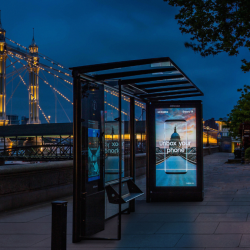Modern marketers invest huge amounts of money, time, and energy into planning and buying digital advertising campaigns
According to recent research, spending on digital ad formats now accounts for 70% of all ad spend globally. This growing investment underscores the central role digital advertising plays in today’s marketing strategies. However, the digital media landscape is increasingly complex and fragmented, making it difficult for marketers to pinpoint where their target audience is and how to engage with them effectively.
For this reason, in recent years, digital marketers have concentrated much of their time on how to use digital signals and other data to target and personalise their ads. Somewhere along the line, the role of creativity in the effectiveness of digital advertising became a secondary consideration to the technicalities of programmatic bidding, frequency capping and measuring Return on Ad Spend (ROAS). In addition, the measurability of digital advertising combined with the pressure to deliver tangible results has led some marketers to focus their budgets on digital performance campaigns at the expense of longer-term brand building.
However, as audiences become familiar with (and discerning about) targeted ads, the baseline effectiveness of digital advertising is now in question. In 2024, creativity remains a vital tool for brands wanting to leverage digital media successfully. With 80.5% of marketers now agreeing that creative quality is crucial for campaign success, the need for innovative and compelling content has never been more pressing. So, in a digital landscape awash with information, how can creativity redefine brand engagement and help capture consumer loyalty?
Innovative ad formats
Consumers are bombarded with messages from every angle, so brands must craft campaigns that go beyond personalisation — they need to evoke emotional responses and foster genuine connections. Creativity is no longer an optional extra for digital campaigns but essential for brands to break through the noise and establish lasting relationships with consumers.
The rise of emerging ad formats has intensified the competition for consumer attention. These innovative formats push the boundaries of conventional digital advertising in ways that allow them to outperform standard ads on viewability, engagement, and click-through rate. When the technical capabilities of these formats are combined with data-infused creativity (rather than simply data-led targeting), brands can capture attention, foster loyalty, and create unique experiences that resonate with their audience.
Most people are now familiar with shoppable ads, designed to boost consideration and purchase intent. By presenting products with relevant information, prices, and direct links to the purchase action, these formats reduce the gap between product discovery and purchasing decisions. For example, some new formats interactively display the nearest point of sale to the user’s location, creating a more personalised experience.
Building on this, other innovative formats incorporate 3D effects to create interactive interfaces that capture attention through their visual appeal. These formats increase interactivity, offering users a deeper, more immersive experience. Augmented Reality (AR) takes this concept even further, not only visualising objects but also allowing users to engage with AR scenarios, making decisions that influence the course of the experience and enhancing the level of interaction.
Similarly, gamification introduces a fun and engaging way to interact with ads. By transforming the advertising experience into small interactive games, brands can reinforce their messaging creatively while encouraging active participation and engagement from users. Together, these formats elevate the user’s experience by blending commerce, creativity, and interactivity.
For example, how about a custom ‘wrap’ background that can animate and apply effects? Or content pills that adapt to the user’s consumption moment without interrupting their browsing experience? Or ads that scroll through to reveal a story or message?
Ad formats now exist to allow all these things and more, giving marketers the opportunity to design and deliver creative experiences that cut through the noise.
Focus on creativity
By employing a range of innovative digital ad formats and using data insights to fine-tune creative strategies, brands can deliver engaging, tailored messages at the right time and in the right way to capture user attention. Innovation in creative formats, from interactive content to immersive experiences, can elevate brand narratives and deepen consumer relationships, ultimately driving business growth.
This renewed and enhanced focus on creativity will empower advertisers to develop robust digital advertising strategies that connect with target audiences, maximise ROI, and achieve sustainable success in a competitive digital landscape.
Featured image: EXTE

































